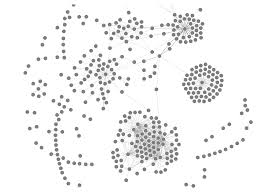Nano Telecommunication Modulation (RN & TN) Nano Wave Receiver and Transmitter (Nano-Microelectronics PhD)
Researcher and author: PhD student : Afshin Rashid
Note: The TN nano transmitter and the electromagnetic RN receiver must perform operations such as basic bandwidth processing , frequency conversion, filtering and wave propagation for the signals it sends or those that reach the nano-antenna.
Since the nano-antenna will fluctuate at terahertz frequencies, it is necessary to use FET RF transistors that are capable of operating at this high frequency .Numerous transistors have been manufactured and introduced in this field. At lower frequencies, nanomaterials are able to communicate over longer distances, on the other hand, the efficiency of nanowires is predicted to be very low. Therefore, nanosensors do not communicate at MHz frequencies, and higher energy waves are needed to control a large number of nanoseconds in a very wide area. For this reason, nanowires are correlated at frequencies of 1.0 to 10 THz. Due to the severe limitation in size and energy of nanowires, the generation of high-power signals is not operational at terahertz frequency. Therefore, classical communication patterns based on continuous signal communication cannot be implemented and short-pulse modulation techniques (OOK-TS: Keying Off-On) are used for WNSNs.Wave as information carriers similar to classical communications. However, due to the severe scarcity of resources and the quantum effects of materials, classical methods cannot be applied directly to the nanosphere. Therefore, new materials and techniques need to be used
CNTs in nano-communication waves
CNTs are the most promising and promising material for nano-communications. The charged CNT resonates with the excited wave and its distance with the plate changes according to the wave amplitude. Changing the distance reduces the propagation property of the CNT field and the change in current. This is the main idea for using single CNTs as antennas and dimulators together.
Molecular communication at the transceiver (nano telecommunications)
Molecular communication is a natural communication method used by living organisms (for example, to communicate via pheromones) and is predicted to become a portable method for future nano devices. The concentration of the molecule in the vicinity of the receiver may be used to understand the transmitted molecular bit transmitter.
Quantum communication in nano-telecommunications
Quantum communication is based on the transfer of complex pairs from one place to another by means of exchange, repetition and refinement. Quantum or quantum interference gives us enormous computational power, especially in source coding, where information about the entire content is needed instead of individual inputs.
Author: Engineer Afshin Rashid
PhD student of Nano-Microelectronics at Islamic Azad University, Science and Research Branch, Tehran





